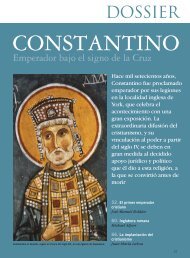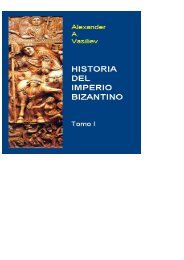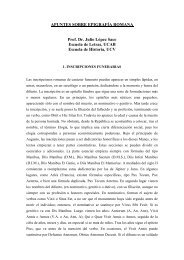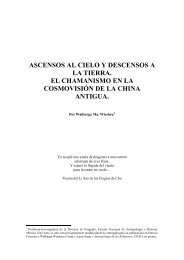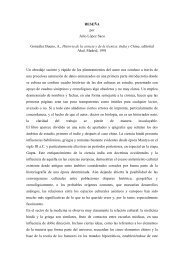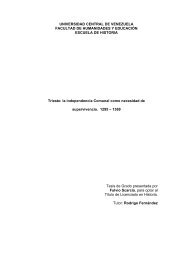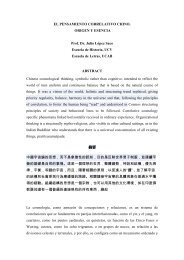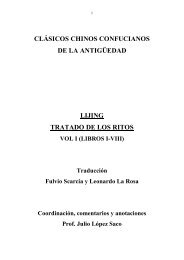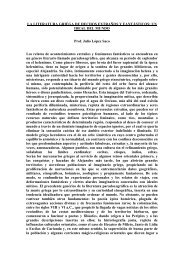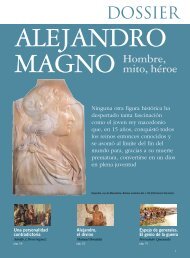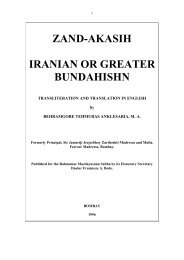El templo de Jerusalén era una imago mundi, un centro cósmico, lugar decomunión entre Dios e Israel. Representaba el principio del tiempo cósmico y erala morada terrestre de Dios, por lo tanto, un reflejo del Tabernáculo Celestial. Elpropio Josefo nos habla de tres partes del santuario como tres regiones cósmicas:el atrio, las regiones inferiores y el mar; el santuario es la tierra; el Santísimo, elCielo.Las referencias a las obras de Flavio Josefo, Tácito, básicamente, Anales, el Librode Ezequiel y Esdras, se convierten en fuentes necesarias en el abordaje de esteparticular episodio histórico-religioso.5. Bibliografía clásica y actualizada-, "Warning Inscription of Herod's Temple", Jewish Quarterly Review, nº 37, 1946-47, pp. 387-405-Cooper, J.C., Diccionario de símbolos, ediciones G.G., Barcelona, 2004-Deissmann, A., Light from the Ancient East: The New Testament Illustrated byRecently Discovered Texts of the Graeco-Roman World. Traducido por L. R. M.Strachen, Baker, Grand Rapids, 1965, pp. 79-81 y Figura 9-del Olmo Lete, G., Mitos y Leyendas de Canaan, ediciones Cristiandad, Madrid,1981-Eliade, M. / Couliano, I.P., Diccionario de las religiones, editorial Paidós,Barcelona, 1997-Eliade, M., Lo sagrado y lo profano, editorial Labor, Barcelona, 1985- J. B., Corpus Inscriptionum Iudaicarum, Vol. 2, Pontificio Instituto di ArcheologiaChristiana, Rome, 1936-52-Hanson, K. C. / Oakman, D.E., Palestine in the Time of Jesus: Social Structuresand Social Conflicts, Fortress Press, Minneapolis, 1998-Illife, J. H., "The ΘΑΝΑΤΟΣ Inscription from Herod's Temple, Fragment of aSecond Copy", Quarterly of the Department of Antiquities in Palestine nº 6, 1938, 1-3 y Plate I-Rousseau, J. J. / Rami, A., Jesus and His World: An Archaeological and CulturalDictionary, Fortress Press, Minneapolis, 1995
-Schürer, E., The History of the Jewish People in the Age of Jesus Christ (175 B.C.-A.D. 135, Vol. 2, Editado por G. Vermes, F. Millar, M. Black, P. Vermes, T. & T.Clark, Edinburgh, 1979-Segal, P. "The Penalty of the Warning Inscription from the Temple inJerusalem", Israel Exploration Quarterly nº 39, 1989, pp. 89-94-Seland, T., Establishment Violence in Philo and Luke: A Study of the Torah andJewish Vigilante Reactions, Biblical Interpretation Supplements nº 15. E.J. Brill,Leiden, 1995P52 UN FRAGMENTO <strong>DEL</strong> EVANGELIO DE JUAN1. Descripción técnicaEl papiro P52 es el fragmento manuscrito más antiguo conocido de un Evangeliodel Nuevo Testamento, concretamente, del de Juan (18: 31-33). Escrito en griegosobre papiro, y con una cronología aproximada ente 125 y 150 de nuestra era, fuedescubierto en Egipto en 1920, y adquirido por Bernard P. Grenfell. Hoy seencuentra en la Biblioteca John Rylands de Manchester, en Inglaterra, catalogadocon el número de inventario papiro griego, de la familia alejandrina, 457,manuscrito P52. La inicial traducción al idioma inglés, con una buena dosisinterpretativa, fue realizada por el propio K.C. Hanson.2. Texto griegoJuan 18, 31-33ΕΙΠΕΝ ΟΥΝ ΑΥΤΟΙΣ Ο ΠΙΛΑΤΟΣ ΛΑΒΕΤΕ ΑΥΤΟΝ ΥΜΕΙΣ ΚΑΙ ΚΑΤΑ ΤΟΝ ΝΟΜΟΝ ΥΜΩΝ ΚΡΙΝΑΤΕ ΑΥΤΟΝ ΕΙΠΟΝ ΑΥΤΩ ΟΙ ΙΟΥ∆ΑΙΟΙ ΗΜΙΝ ΟΥΚ ΕΞΕΣΤΙΝ ΑΠΟΚΤΕΙΝΑΙ ΟΥ∆ΕΝΑ ΙΝΑ Ο ΛΟΓΟΣ ΤΟΥ ΙΗΣΟΥ ΠΛΗΡΩΘΗ ΟΝ ΕΙΠΕΝ ΣΗΜΑΙΝΩΝ ΠΟΙΩ ΘΑΝΑΤΩ ΗΜΕΛΛΕΝ ΑΠΟΘΝΗΣΚΕΙΝ ΕΙΣΗΛΘΕΝ ΟΥΝ ΠΑΛΙΝ ΕΙΣ ΤΟ ΠΡΑΙΤΩΡΙΟΝ Ο ΠΙΛΑΤΟΣ ΚΑΙ ΕΦΩΝΗΣΕΝ ΤΟΝ ΙΗΣΟΥΝ ΚΑΙ ΕΙΠΕΝ ΑΥΤΩ ΣΥ ΕΙ Ο ΒΑΣΙΛΕΥΣ ΤΩΝ ΙΟΥ∆ΑΙΩΝ
- Page 1 and 2:
FUENTES GRECOLATINAS DELPRÓXIMO OR
- Page 3 and 4:
GRECIA Y ROMA- Inscripción a Lucio
- Page 5 and 6:
mayor y mejor producción intelectu
- Page 7 and 8:
PRÓXIMO ORIENTE Y EGIPTOEL PAPIRO
- Page 9 and 10:
3. TraducciónFragmento 1…a los L
- Page 11 and 12:
interpretaciones, sin embargo, alud
- Page 13 and 14:
2. Texto griegoColumna número 1, l
- Page 15 and 16: de nosotros una lista escrita de qu
- Page 17 and 18: autoridad muy amplia, incluso desde
- Page 19 and 20: αποδοτω Ηρακλειδης
- Page 21 and 22: ejército, y Antípatro, como estra
- Page 23 and 24: el Museo de El Cairo, catalogado co
- Page 25 and 26: cada nomo, que se denominaban metro
- Page 27 and 28: -Zielinski, T., Historia de la civi
- Page 29 and 30: Pero en caso negativo, él le pagar
- Page 31 and 32: comicios centuriados para desempeñ
- Page 33 and 34: su condición, en términos general
- Page 35 and 36: 2. Texto griegoετους ενατ
- Page 37 and 38: A partir de aquí, todo lo que sigu
- Page 39 and 40: a su legado en Siria, A. Cornelio P
- Page 41 and 42: encontramos apoyo en aquella vertid
- Page 43 and 44: oficialista, cooperaban con la auto
- Page 45 and 46: Testament Illustrated by Recently D
- Page 47 and 48: Traducción 1. Los israelitas de De
- Page 49 and 50: marinera de los cretenses, tradici
- Page 51 and 52: Inscriptiones Latinae Selectae 232
- Page 53 and 54: 4. Contexto histórico y aparato cr
- Page 55 and 56: glorificaba al emperador como dispe
- Page 57 and 58: especial cuando Roma empieza a saca
- Page 59 and 60: EDICTO PARA EL CENSO EN EL EGIPTO R
- Page 61 and 62: fuentes de ingreso del Estado: trib
- Page 63 and 64: cananeo, y deidad suprema de la may
- Page 65: 3. TraducciónNingún extraño podr
- Page 69 and 70: judíos del Consejo del Sanedrín h
- Page 71 and 72: 5. Bibliografía clásica y actuali
- Page 73 and 74: ρεσασιν. Ελεαζαρος
- Page 75 and 76: cronológica y espacial del texto s
- Page 77 and 78: ντα οντα τον αριθµο
- Page 79 and 80: magistrado, como el de tomar los au
- Page 81 and 82: -Millar, F. (comp.), El Imperio Rom
- Page 83 and 84: desplazamiento del ofrecido a los d
- Page 85 and 86: GRECIA Y ROMAINSCRIPCIÓN A LUCIO J
- Page 87 and 88: urbana, sino también con la repobl
- Page 89 and 90: W., (edit.), Sylloge Inscriptionem
- Page 91 and 92: asumieron la obligación de recauda
- Page 93 and 94: 4. Contexto histórico y aparato cr
- Page 95 and 96: en las guerras contra los partos y
- Page 97 and 98: -Richmond, I. A., "The Cult of Mith
- Page 99 and 100: quo facile est opinari, quae turba
- Page 101 and 102: Pienso que es todavía posible ser
- Page 103 and 104: 5. Bibliografía clásica y actuali
- Page 105 and 106: César en lengua púnica significa,
- Page 107 and 108: A MODO DE CONCLUSIÓNEl trabajo rec
- Page 109 and 110: [18] Entendidos como servicio públ
- Page 111 and 112: [87] Archisunagogos, de αργω, e
- Page 113 and 114: [126] Asuntos pendientes por hacer.
- Page 115 and 116: que Atia, su madre, había concebid



